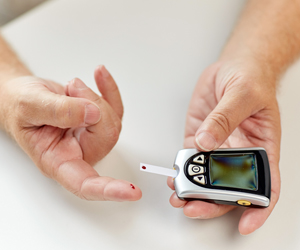A new study suggests that patients on the newer medications for diabetics had a slightly lower risk of hospitalization. They also spent between $920 and $1,760 less on annual total healthcare costs.
Rajesh Balkrishnan, the study’s lead author and the Merrell Dow professor of pharmacy at Ohio State University analyzed more than three years of medical records data on patients who took thiazolidinediones (TZDs) or either metformin or a sulfonylurea to control their diabetes. TZDs (pioglitazone and rosiglitazone, brand names Actos and Avandia, respectively), were approved by the Food and Drug Administration in the late 1990s. Metformin and sulfonylureas have been on the market for more than 50 years. TZD was the strongest predictor of a reduced risk of hospitalization and decreased healthcare costs in this group of patients. But TZDs can be 10 times more expensive than the older diabetes drugs.Some of the newer drugs are more expensive but the extra expense is made up for by a reduction of cost in the healthcare aspect. The study is published in the journal Current Medical Research and Opinion. The researchers collected information on 3,191 adults enrolled in the North Carolina Medicaid program. All of the participants had Type 2 diabetes and started medications for the disease between July 2001 and December 2003.
The enrollees were divided into two groups based on the type of drug their physicians prescribed. About 1,774 took a TZD, while 1,417 took either metformin or a sulfonylurea. The researchers collected information on total healthcare expenditures and hospitalization rates for all patients. Type 2 diabetic patients are insulin resistant that is the cells in his body can’t correctly make use of the insulin and hence blood sugar levels remain high. TZDs make cells in the body more sensitive to insulin, while metformin lowers blood sugar levels and sulfonylureas boost pancreatic insulin production.
Balkrishnan said that a brand-name TZD may cost $100 a month, while a prescription for sulfonylurea or metformin may cost as little as $10 a month. Overall, the participants who took a TZD spent an average of $76 to $150 less per month on total healthcare costs. The patients who were prescribed TZDs were about 10 % less likely to be hospitalized than were the patients taking either of the other two older drugs.











